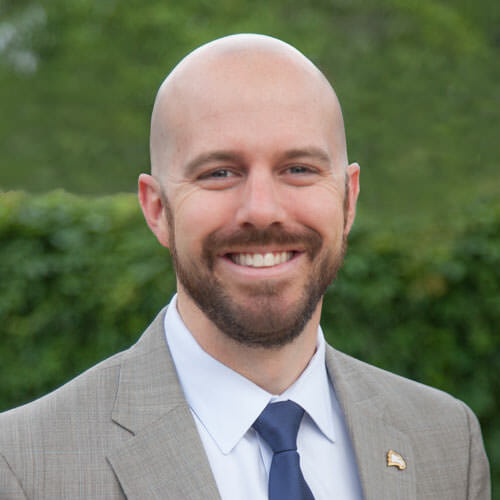
Every college and university that sponsors intercollegiate athletics, at any level, must come to grips with how that division fits into the overall mission of the institution. And, at the same time, athletics must work to integrate itself into the university’s culture. One way to achieve that is to embark on a highly collaborative strategic planning process.
Part of the Institution, Yet a World Apart
The academic community often perceives the intercollegiate athletics division as a separate world:
- Athletics has “admissions criteria” distinct from the institution’s. Students will not be recruited to become student-athletes without demonstrating some athletic ability in addition to their academic accomplishments.
- In many cases, the athletic facilities, which often take up a fair amount of real estate, tend to be grouped together in a remote part of campus creating the impression of an athletics “fiefdom.” While anyone can walk into the library or the student center, it is perceived that not everyone can walk into the athletics department. Although this is a perception and not a reality, it does foster an “us vs. them” mentality.
- At institutions with higher profile athletic departments, additional challenges like larger marketing and advertising budgets or the continual purchase of big-ticket equipment items can contribute to a rift between “campus proper” and “athletics.” It is common to hear sentiments like “they don’t understand us” voiced on both sides of this divide.
It is essential to close this gap and eliminate the type of environment where the department of athletics is seen as competing with other divisions in pursuit of comprehensive institutional success. At Winthrop University, strategic planning at the division level gave us the opportunity to bridge this gap. Because we pursued our strategic planning process in a participatory way, the planning process itself provided the entire campus with opportunities to learn how athletics can be a valuable asset in achieving institutional success. It’s probable that a participatory strategic planning process could achieve the same bridge-building for other divisions on campus, as well.
Here is a quick look at what we did and why, how this changed the culture, and what advice we would offer for division heads (in athletics or other units) at other institutions.
Participatory Strategic Planning: The Steps We Took
We created an “athletics strategic planning committee” with one important requirement–every campus division had to be represented on the committee. This committee was populated by asking each university vice president to recommend one or two people from their division to be a part of this process. The result was a committee made up of university faculty and staff who were highly respected within the president’s cabinet and who would now feel invested in the results of the athletic department strategic planning process–and ultimately in the plan’s success.
EMPOWERING THE COMMITTEE
The director of athletics and a facilitator worked with the committee and charged them with defining the impact athletics could have on the university. Committee members were asked to outline a set of aspirational goals they felt our department of athletics should be striving to achieve in order to enhance the university’s mission and purpose. What should Winthrop Athletics be aspiring towards? Over the course of multiple sessions–and kept to task by the facilitator–this group worked collaboratively and openly to develop our six aspirational goals.
SEEKING BUY-IN FROM ATHLETICS
At the next athletics all-staff meeting, the athletics director and the facilitator shared a draft of these aspirational goals. The staff were asked to respond with their thoughts on each. We anticipated some concern or push back at this stage but were surprised to receive agreement and appreciation from the department. What became clear was that the participatory and university-wide process of reaching these goals had enabled deep conversations about the specific value that athletics brought to the university–and this was reflected in the draft goals. As one head coach stated, “I was genuinely concerned when I heard that these goals were developed primarily by non-athletics employees, but once I read them I realized that our University really does understand what we’re trying to accomplish.”
After some minor refinement of the aspirational goals, the athletics department staff were broken into 10 working groups who were asked to collectively brainstorm three to five measurable outcomes that would demonstrate successful achievement of each aspirational goal. Once these objectives were submitted, the facilitator then worked to identify the strongest “themes” for each aspirational goal, creating the first draft of the strategic plan. You can read more about this process in our article “Athletic Department Strategic Planning: The Power of Defining Objectives, Not Just Tactics.”
We then solicited input from the student-athletes. In hindsight, we should have included students on the committee at the start. As it was, we were prepared to shift course had the students provided feedback significantly different from what we had already received. Thankfully, the student-athlete response was one of excitement for the future. In the words of one student-athlete, “seeing all of the work that is being done makes it feel like my life really matters to this department and this institution.”
BACK TO THE CAMPUS COMMITTEE
Because of the priority we placed on university-wide engagement, we shared the draft strategic plan with the campus committee, asking them two questions:
- Does this draft of the plan capture the original intent of the aspirational goals developed by the committee?
- Can every measurable outcome of this strategic plan be clearly tied to a measurable outcome within the university’s comprehensive strategic plan?
Receiving yes answers to both, we presented the plan to the president and board of trustees, who strongly endorsed the process and its results.
Those results have been significant. In the first year of the plan’s implementation, we achieved 13 of the 18 objectives that were laid out, and staff in the athletics department openly verbalized their appreciation for the collaborative process and the ownership they feel in the success of the plan. The university community as a whole has echoed the appreciation that as a division, their department of athletics has acted in the interest of advancing the university’s mission and contributing to the “Winthrop Experience.” The degree of shared ownership in the success of athletics is very different from the “us vs. them” mentality we can still remember.
Advice for Other Division Heads
Looking back at the success of this participatory planning process, we offer the following pointers to others wanting to pursue a similar effort:
- The use of a facilitator was essential. Without an experienced strategic planning facilitator, our strategic planning process may have waned or even ground to a complete halt. In our case, we happened to have access to an excellent candidate on campus, but whether you have an internal facilitator or are outsourcing, that experienced facilitator is a necessity.
- Creating a campus-wide committee was the key to identifying truly aspirational goals and to giving all university constituencies a sense of shared ownership of the athletic department and its success.
- Mistakes do not need to halt the process. When we realized our oversight in not having invited student input, our collective efforts to own the mistake and adjust accordingly led not to frustration but instead appreciation for our transparency. How we responded to our mistake actually strengthened the outcome.
- Once the plan is created, the real work begins. We have taken numerous steps to publish the plan and to track the results. For us, it was helpful to create a “repository” for the successes achieved along the way. Anytime a staff member identifies a contribution to an objective, that information must be sent directly to the “repository” to be reviewed at the end of the year.
- Build collaboration into the plan itself – this was a massively impactful decision we made. One of our most positively received objectives was to create “sustainable, collaborative initiatives” with other divisions on campus. Pursuing this objective during the year since has reinforced our commitment to strength bridges between all of our campus partners.
As we progress into the future, we will also be studying the strategic plans released by our peers in the industry. While our plan was specific to Winthrop University, it is our hope that the process we followed is replicable and that there are lessons emerging from it that can have a positive impact on your campus and on your institution’s student experience.
__________________________________________________________
Image Credit: Photo above by Mike Wilson on Unsplash.


